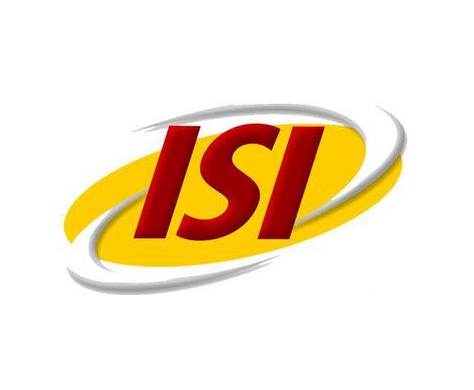دانلود رایگان مقاله لاتین عامل قدرت ارتباطی رسانه سازی شرکت از سایت الزویر
عنوان فارسی مقاله:
رسانه سازی شرکت ها به عنوان یک عامل قدرت ارتباطی آنها و نقش جدید روابط عمومی
عنوان انگلیسی مقاله:
Mediatization of companies as a factor of their communication power and the new role of public relations
سال انتشار : 2016

برای دانلود رایگان مقاله عامل قدرت ارتباطی رسانه سازی شرکت اینجا کلیک نمایید.
بخشی از مقاله انگلیسی:
2. Literature review
The conceptual framework that enables analysis of the development and changes in planning and implementing media communication with key corporate stakeholders is mediatization (Lundby, 2014). Mediatization is the concept that helps one see the traditional issues of communication studies and the media in a new, relevant way, and in so doing helps in understanding the influence of mediatization on communication in modern society (Lundby, 2009, 2014). The concept of mediatization, as Lundby (2009) says, can be defined within a matrix among communication, culture, and hegemony, and it is also defined as a process of social change that brings media logic into the social and cultural fields while its roots lie in the development of modern media technologies (Silverstone, 2005). Krotz (2009, 2014) also has stressed the importance of meditation to understand the societal and media changes. Lilleker (2008) defines mediatization as a theory explaining how the media formulate and frame the process and discourse of communication. Mazzoleni and Schulz (1999) point out the consequences of these processes because institutions and society as a whole are shaped under the influence of, and with dependence on, the mass media. Hjarvard (2009) emphasizes the institutional aspect and defines mediatization as a process in which society becomes subordinated and dependent on the media and their logic. Lundby (2009) draws attention to media logic, which is a key mechanism within the mediatization process. Media logic relates to both the institutional and technological modus operandi, including the method of distribution, the symbolic resources, and the use of formal and informal rules (Hjarvard, 2008), while Couldry and Hepp (2013) point out that different media have different logics, which must be taken into account in the analysis. In their analysis of the development of corporate mediatization, Ihlen and Pallas (2014) proceed from the definition of mediatization as an adaptation of corporations to the logic, working practices, and preferences of the media, and that the different media thereby crucially shape the environment and operating conditions. In their analysis, however, they remain within the framework of corporate relations with the mass media, as is the case in a study by Pallas and Fredriksson (2013). When speaking about mass media, it is important to bear in mind the warning by Krotz and Hepp (2011) that media should not be equated with mass media, as the latter is only one type of communication media. They say a definition of media should refer to the characteristics of all relevant types of media. At the same time, such a definition should be independent of the specific way that people individually use certain forms of media (p. 142). When we speak of owned media, we therefore need to expand our understanding of what the media are, a task that was performed in the mediatization analysis by Krotz and Hepp (2011), who define media very broadly as something that modifies and transforms communication. A definition of media that is too narrow or unclear leads to confusion. For example, a single phenomenon such as a corporate Facebook channel could be designated as a medium, a network, or a communication channel. Yet specific forms of mediatization derive, in Finnemann’s definition (2011), from specific media circumstances in the current media matrix. This means that the mediatization in the 21st century is different from the mediatization in the 20th century, which was defined by a media matrix in which mass media was predominant. For this reason the establishment of media relations and marketing departments in companies, with the primary responsibility of advertising in the media and thereby influencing various stakeholders through mass media, can be understood as a historically defined form of company mediatization (Verciˇ cˇ & Tkalac Verciˇ c, ˇ 2014b). Current media circumstances are characterized by the shifting role, operating method, and influence of the digital media. Under the influence of technological, informational, and associated social change, which we label digitalization, individual media and the entire media matrix within which companies operate are changing (Gillin, 2007; Hiebert, 2004; Zerfass, 2010). The new media environments emerging in the digital environment, especially on the Internet, are taking on an increasingly important role in communication (Finnemann, 2014).
برای دانلود رایگان مقاله عامل قدرت ارتباطی رسانه سازی شرکت اینجا کلیک نمایید.
کلمات کلیدی:
Mediatization of companies as a factor of their communication power ... www.sciencedirect.com/science/article/pii/S0363811116300996 by I Savič - 2016 - Cited by 4 - Related articles Apr 9, 2016 - The paper seeks to explore and analyze the mediatization of companies, and argues that companies are entering a new phase of mediatization ... [PDF]Mediatization of Companies as Factor of their Communication Power ... www.bledcom.com/sites/default/files/034_Session%205A_Savic.pdf Mediatization of Companies as Factor of their Communication. Power and new role of PR. Igor Savič. Partner and Managing Director. PM, poslovni mediji d.o.o., ... Mediatization of companies as a factor of their communication power ... https://www.researchgate.net/.../301250264_Mediatization_of_companies_as_a_factor_... On Apr 1, 2016 Igor Savič published: Mediatization of companies as a factor of their communication power and the new role of public relations.
